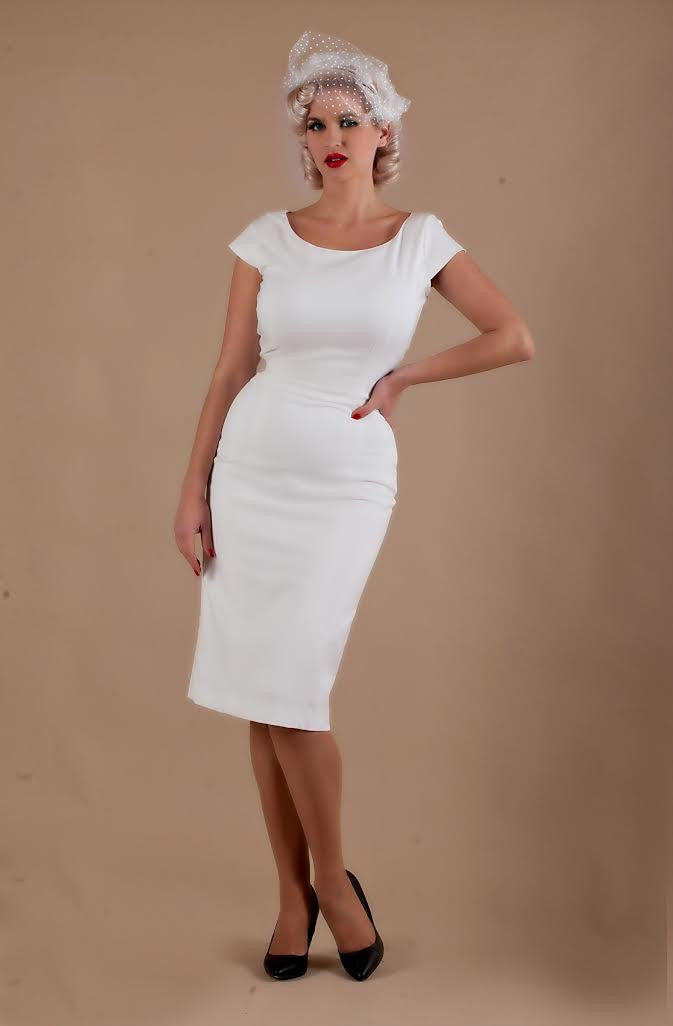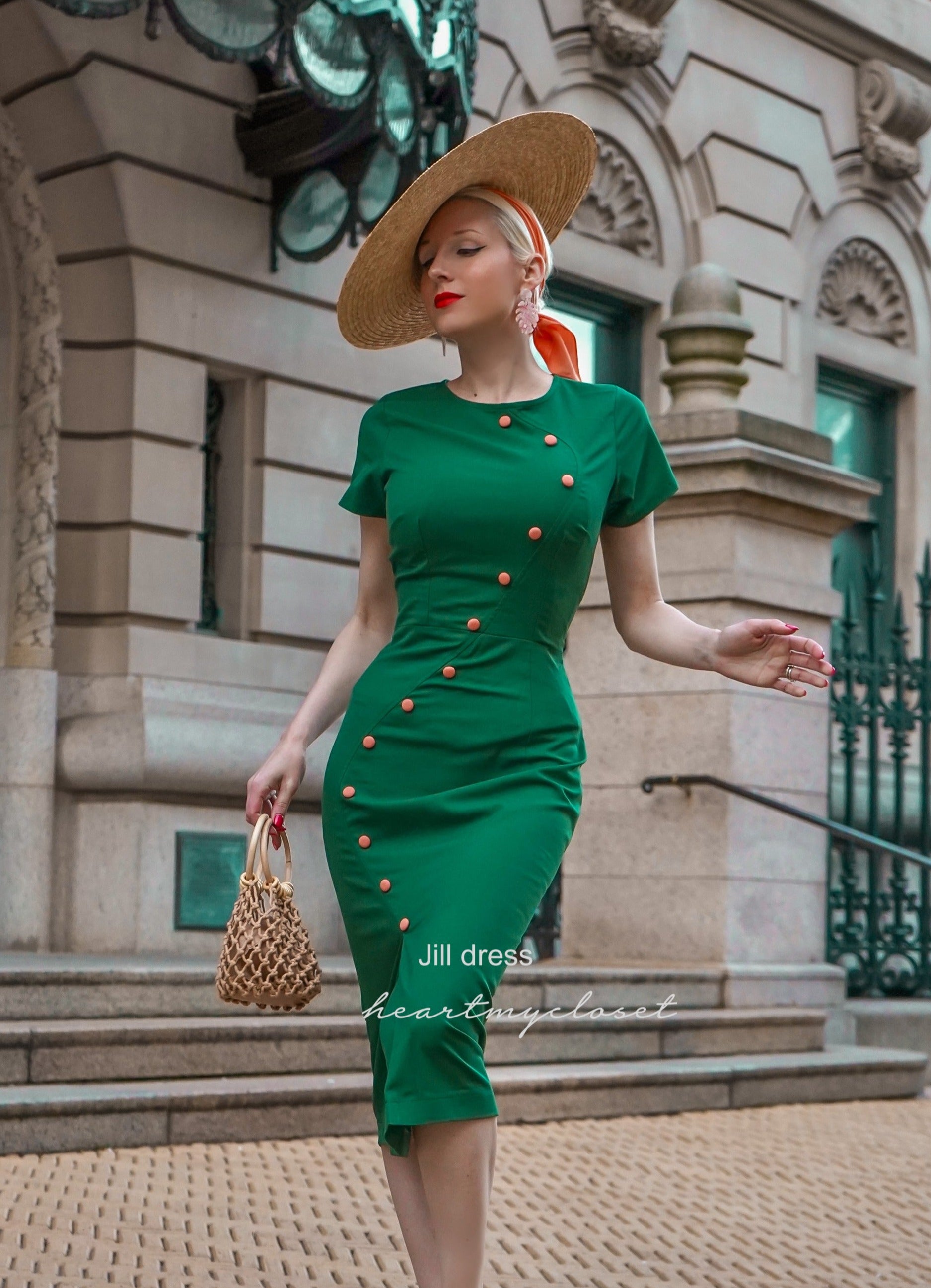How to Style a Pencil Dress for Effortless Elegance
Effortless elegance isn’t about following fleeting trends; it’s about mastering timeless pieces that enhance your natural grace. The pencil dress stands as a cornerstone of this philosophy, offering a silhouette that has defined sophistication for decades. With its tailored fit and versatile design, it empowers you to create looks that are both polished and personal. Let’s explore how to harness its potential, blending style with substance.
The Anatomy of a Pencil Dress
To appreciate the pencil dress, one must first understand its structural elements. Characterized by a straight, narrow cut that typically falls at or just below the knee, this garment hugs the body’s curves without constriction, creating a streamlined profile. The term “pencil” itself draws from its resemblance to the slender shape of a writing instrument, emphasizing vertical lines that elongate the figure. Historically, its origins trace back to the post-World War II era, with Christian Dior’s “New Look” in 1947 popularizing fitted silhouettes that celebrated femininity after years of utilitarian fashion. As noted by the Fashion Institute of Technology, this design prioritizes balance, often incorporating darts and seams to contour the bust, waist, and hips. Scientifically, the dress leverages principles of visual perception; according to Gestalt psychology, the uninterrupted vertical line it creates can make the wearer appear taller and slimmer, a effect supported by studies in apparel design. Whether crafted from wool for structured elegance or stretch jersey for comfort, the pencil dress adapts to various body types, proving that its appeal lies in its engineered simplicity.

Accessorizing for Impact
Accessories transform a pencil dress from a standalone piece into a curated statement. Begin with footwear: pointed-toe pumps, as advocated by style icon Audrey Hepburn, extend the leg line, reinforcing the dress’s elongating effect. Alternatively, block heels offer stability for day-to-evening transitions, blending comfort with chic. When it comes to jewelry, less is often more; a single statement necklace or elegant drop earrings can draw attention to the neckline without overwhelming the silhouette. Bags should complement the dress’s lines—a structured clutch for formal events or a crossbody for casual outings maintains the streamlined aesthetic. From a color theory perspective, accessories in monochromatic or analogous shades (e.g., navy with charcoal) create harmony, while a pop of contrast (like a red belt) can define the waist. As fashion historian Valerie Steele notes in her writings for The Museum at FIT, accessories in mid-20th century fashion were used to “accentuate, not dominate,” a principle that holds true today. For instance, a silk scarf tied as a neckerchief adds texture without bulk, echoing the dress’s refined lines. Remember, the goal is to enhance, not obscure; each accessory should serve a purpose, whether functional or aesthetic, ensuring the pencil dress remains the focal point of effortless elegance.

Layering for Versatility
Layering introduces depth and adaptability to the pencil dress, allowing it to transcend seasons and occasions. Start with outerwear: a tailored blazer in a complementary fabric, such as wool or tweed, sharpens the silhouette for professional settings, while a leather jacket injects edge for casual wear. The key lies in proportion—cropped jackets maintain the dress’s length, avoiding visual shortening. For cooler weather, lightweight turtlenecks or button-down shirts worn underneath add warmth and texture; this technique, popularized by designers like Michael Kors, plays with collars and cuffs to frame the face and wrists. Scarves and wraps offer another layer of sophistication; a pashmina draped over the shoulders can soften the look for evening events. From a practical standpoint, layering regulates body temperature, a concept supported by textile science which emphasizes breathable materials like cotton or merino wool for base layers. In her book “The Curated Closet,” Anuschka Rees highlights layering as a tool for maximizing wardrobe utility, suggesting that a single pencil dress can yield multiple outfits through strategic additions. By experimenting with lengths and textures, you create visual interest without sacrificing the dress’s inherent elegance, proving that versatility is the heart of timeless style.

Fabric and Fit: The Foundations
The magic of a pencil dress lies in its fabric and fit, which determine both comfort and aesthetic appeal. Opt for materials with inherent structure, such as ponte knit or double-knit wool, as they hold their shape while allowing movement—a balance praised by designers like Diane von Furstenberg for empowering wearers. Stretch blends, often incorporating elastane or spandex, accommodate curves without gaping, a detail crucial for achieving that effortless drape. When it comes to fit, prioritize seams that align with your natural waist and hips; ill-fitting dresses can create horizontal pulls, disrupting the vertical illusion. Tailoring is your ally; as noted in “The Fashion System” by Roland Barthes, clothing gains meaning through its adaptation to the individual body. For instance, taking in the sides or adjusting the hem can transform an off-the-rack piece into a custom fit. Scientifically, fabric weight and weave affect how the dress interacts with light and movement; heavier fabrics like crepe offer a matte finish that minimizes bulk, while lighter ones like silk charmeuse provide a luminous flow. Always consider the occasion—a thicker fabric for daytime durability or a luxurious one for evening glamour—ensuring your pencil dress not only looks elegant but feels uniquely yours.

Confidence in Every Step
Ultimately, styling a pencil dress is an exercise in self-assurance. It’s a garment that has graced icons from Grace Kelly to Meghan Markle, each embodying poise without pretense. By focusing on fit, accessories, and layers, you craft a look that speaks to your individuality while honoring timeless design principles. Embrace its lines, play with its possibilities, and let it become a canvas for your personal narrative of elegance.






